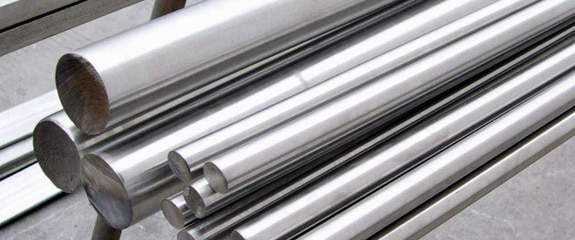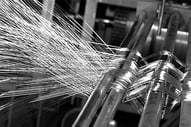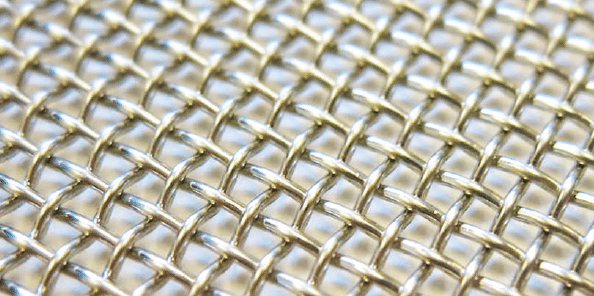300 Series Stainless Steel vs 400 Series: Which Is Best for Me?
Stainless steel wire mesh offers a level of versatility and durability that most mesh media cannot match. With dozens of classifications and specifications, lab technicians and floor engineers must pinpoint the best solution to deliver optimal results.
That said, 300 series and 400 series are often compared as they have similar qualities. But what’s the difference?
W.S. Tyler has worked with woven wire mesh of various alloys for over 140 years and is here to ensure you have the know-how needed to select the best alloy for your operation.
In this article, we establish what stainless steel is, what 300 series stainless steel is, what 400 series stainless steel is, how the two compare, and which alloy you should use.
What Is Stainless Steel?
Stainless Steel is a steel alloy that demonstrates a longer life under severe corrosive and temperature conditions. Generally, there are various types of stainless steel on the market.

The biggest differentiator between stainless steel and other alloys is the quality of the alloy and the amount of carbon it contains.
In order for steel to be classified stainless, it must be made up of a range of .1% - .2% carbon and must also contain more than 12% chromium. As chromium is not typically found in steel, it is added to molten steel in order to bond it on a molecular level.
With that, the main difference between 300 series stainless steel and 400 series stainless steel is their chemical make up.
What Is 300 Series Stainless Steel?
The term 300 series stainless encompasses 9 different alloys: 304, 309, 310, 316, 317, 318, 321, 330, 347. Having said that, the most widely used 300 series stainless steel alloys are 304 and 316.
The other 300 series alloys are used for more special conditions.
Now, 304 stainless steel is an alloy that contains 18% chromium and 8% nickel. 316 stainless steel is an alloy that contains 16% chromium, 10% nickel, and 2% molybdenum.
What Is 400 Series Stainless Steel?
Generally, 400 series stainless steel refers to 430 stainless steel as it is the most widely used 400 series alloy. This family of stainless steel contains 11% chromium and 1% manganese.
It should also be noted that 400 series stainless steel has a higher carbon content than 300 series. This makes these alloys sturdier and more durable in the right applications.
How Do 300 and 400 series Stainless Steel Compare?
The biggest difference between 300 series and 400 series stainless steel is the alloys nickel content. The absence of nickel is a key indicator that a stainless steel alloy falls within the 400 series.
The lack of nickel in its composition makes 400 series stainless steel far less resistant to corrosion than 300 series. Having said that, all stainless steel alloys are resistant to corrosion, some are just more resistant than others.
Another key difference between 300 series and 400 series is the fact that 400 series has the property of being magnetic.
When it comes to cost, 300 series stainless steel wire mesh typically stands as the most expensive of the two. The difference in price circles back to the fact that 400 series does not have the corrosion-resistant qualities of 300 series.
Which Alloy Should I Use?
 The application in which the woven wire will be used for ultimately dictates that alloy that should be used. If the mesh is going to be introduced to harsh, corrosive substances, 300 series alloys should be applied.
The application in which the woven wire will be used for ultimately dictates that alloy that should be used. If the mesh is going to be introduced to harsh, corrosive substances, 300 series alloys should be applied.
With that, if your operation calls for the use of material that is magnetic, such as the processing of food-grade phosphate, 400 series must be used. You can also apply 400 series if you are processing non-corrosive materials, such as food particles or aggregates.
An Effective Operation Starts With Selecting The Right Alloy
The durability and versatility of stainless steel wire mesh help lab technicians and floor engineers achieve optimal results in countless industries. Selecting the right alloy is crucial to this success and the decision often comes down to 300 series or 400 series stainless steel mesh.
300 series and 400 stainless steel are ultimately classified by how much nickel the alloy contains. That said, the alloy you choose is only the tip of the iceberg.
There are several other specifications you must review before you can create the perfect wire mesh solution.
Having worked with woven wire mesh for over 140 years, W.S. Tyler has the expertise needed to provide insight into the perfect mesh specifications for you.
For more information about which mesh specifications work best for you, refer to our article: How to Pick the Right Woven Wire Mesh (Mesh Count, Wire Diameter, and Micron Rating).
About Ronnie Brown
Ronnie is the Content Writer for W.S. Tyler and has four years of experience as a professional writer. He strives to expand his knowledge on all things particle analysis and woven wire mesh to leverage his exceptional writing and graphic design skills, creating a one-of-a-kind experience for customers.




